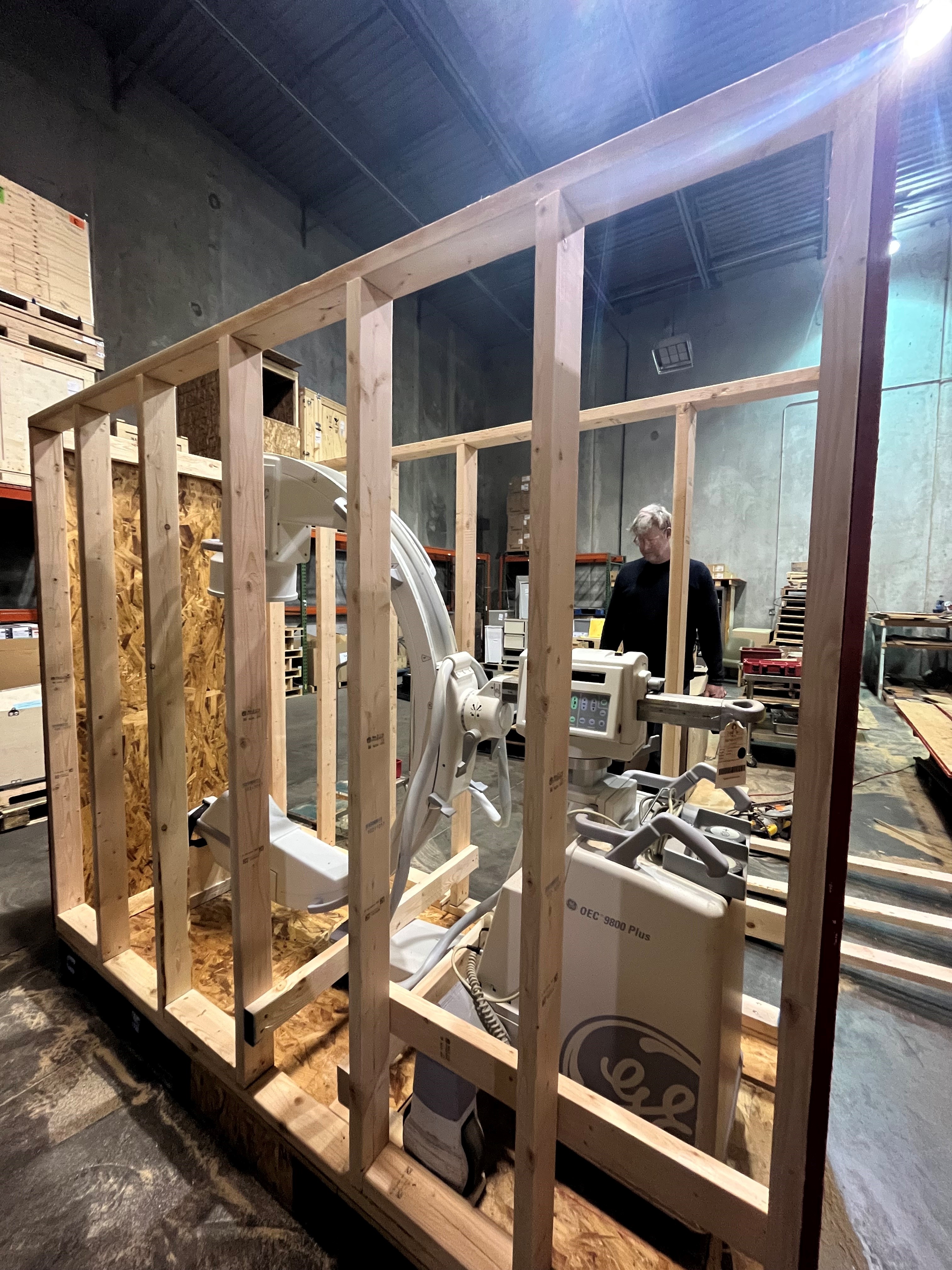Crating with Care
May 27, 2025
David Wilcox is a CDL driver at Mission Outreach whose primary role is transporting donations to and from our warehouses. David also is a trained and talented carpenter, who hand-builds crates for medical equipment we send to partners in low-resource areas around the world. Most of this equipment is surplus from HSHS hospitals and clinics, and our colleagues take great care to donate appropriate equipment that can be shared with those around the world who otherwise may not have this resource.
However, David doesn’t just put together a crate – he learns about each machine to construct crates that provide the best protection possible. This task itself is challenging, as the shipments are transported by truck, rail, and ship to the port in the destination country, then are often trucked over rough roads for up to hundreds of miles before arriving at the receiving hospital. David also is aware of being a good steward of resources to build crates that are cost-efficient.
To design a crate that is both economical and effective, David first works with our biomedical engineer to learn which parts are most sensitive and how the machine could shift during transportation. He then plans with the rest of the warehouse team how the machines will be packed to reduce chances of damage and ensure safety during the loading and unloading process. Finally, he consults the recipient services team to understand the capabilities of the international partner during the unloading and installation process, and to know how the crate could continue to be used for other purposes after the machine is received.
David then designs a crate, sometimes with even varying levels and pieces, that fits the equipment exactly for shipment. Because he is so skilled as a carpenter, he can often complete a crate for a large piece of medical equipment – such as a C-arm or dental chair – in a single day.
The care that David shows as he does his work reflects the respect that he, and the entire Mission Outreach team, has for the clinicians and patients who will use this equipment. If equipment arrives broken or damaged, the international partner may not be able to use it – which creates a financial and environmental burden for them. Most importantly, this equipment has the potential, in the hands of capable local physicians, nurses, and clinicians, to save lives and improve outcomes.
It’s the difference between a hospital in Tanzania having an incubator to care for high-risk infants or putting the baby in a wooden box with a lightbulb. It means that surgeons in Bolivia have operating lights that work and imaging equipment that allows them to do the best surgery they can. It means that a community in Burundi can offer quality dental care with appropriate chairs and instruments – not just pulling teeth that are already infected or dead. It means that our colleagues in other parts of the world have the tools they need to treat their patients and give the best care they can.
It takes a strong effort from many people to make effective medical surplus recovery work possible. Thanks to the role David Wilcox plays in building the crates for medical equipment, we all can be confident that the equipment and supplies will arrive at their intended destination in excellent condition and ready to be used to improve healthcare -- wherever in the world it goes.
Would you like to help provide medical equipment -- and the crates that keep it safe during shipment – to hospitals in low-resource areas around the world? Donate to Hospital Sisters Mission Outreach!
